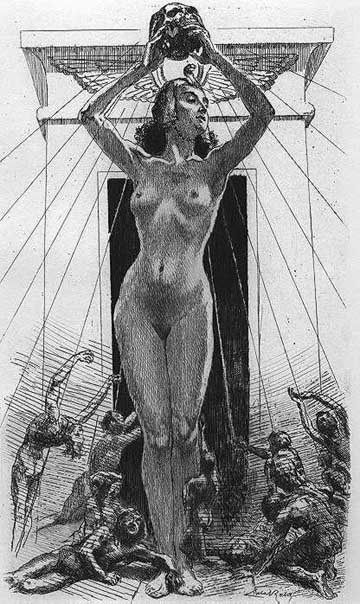


Created by: Pierre
Benoit (1886-1962)
 The Story:
The Story:
The action takes place in 1896 in the French Sahara. Officer André de
Saint-Avit has been asked to investigate the mysterious disappearances of
other officers and explorers in the desert. During one of his desert missions, Saint-Avit and his fellow trappist
monk / officer Jean Morhange save the
life of a Targui warrior Cegheir-ben-Cheikh,
who is secretly Queen Antinea's procurer. They are drugged and awaken in Atlantis -- a royal palace hidden inside
a mountain, overooking a beautiful palm oasis, itself surrounded by the unbreachable Hoggar mountains.
Queen Antinea is the grand-daughter of
Neptune and Clito, the last Kings of Atlantis, and through Cleopatra Selene, also a descendent of the Ptolemies
of Egypt.
 Antinea keeps
an undeground mausoleum of red marble with 120 alcoves, or nicres, carved in the wall -- so far, 53 are filled
with the numbered and labeled bodies of her former lovers, the lost soldiers and explorers. The bodies have been
preserved forever by being dipped into a metallic bath of sulfate of orichalcum, the famous, legendary metal of
the Atlanteans. At the center of the room is an orichalcum throne where Antinea will eventually sit and rest for
eternity once all the holes have been filled.
Antinea keeps
an undeground mausoleum of red marble with 120 alcoves, or nicres, carved in the wall -- so far, 53 are filled
with the numbered and labeled bodies of her former lovers, the lost soldiers and explorers. The bodies have been
preserved forever by being dipped into a metallic bath of sulfate of orichalcum, the famous, legendary metal of
the Atlanteans. At the center of the room is an orichalcum throne where Antinea will eventually sit and rest for
eternity once all the holes have been filled.
Saint-Avit succumbs to Antinea's charms, but Morhange resists her. A spurned Antinea then incite Saint-Avit to
kill Morhange with a silver hammer, which he does. When Saint-Avit discovers his friend's body, now No. 54 in the
red marble room, he recovers his senses. With the help of Antinea's black slave, Tanit-Zerga, he escapes -- she dies in the desert but Saint-Avit is rescued.

TO FIND OUT MORE, BUY THIS
BOOK
The Haggard-Benoit Controversy:
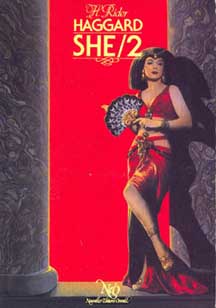 Pierre Benoit's
L'Atlantide was first published in France
in February, 1919. It was Benoit's second novel, after his already successful Koenigsmark. L'Atlantide went
on to win the Grand Prize of the French Academy, was eventually translated into 15 languages and has sold well
over 2 million copies.
Pierre Benoit's
L'Atlantide was first published in France
in February, 1919. It was Benoit's second novel, after his already successful Koenigsmark. L'Atlantide went
on to win the Grand Prize of the French Academy, was eventually translated into 15 languages and has sold well
over 2 million copies.
In October, 1919, an article by Henry Magden
in a French quarterly literary magazine accused Benoit of having plagiarized H.
Rider Haggard's She
(1887). Benoit decided to sue. In the following months, much literary controversy erupted, on both sides of the
channel, mostly filled with chauvisnism, but little scholarly research. Benoit eventually lost the case the following
year, due to the superficial resemblances between the two works, and the Court's interpretation of the laws of
libel.
Since then, Haggard scholars have also put forth the notion that Benoit may also have plagiarized one of Haggard's
lesser-known novel, The Yellow God: An Idol of Africa
(1908), a fantasy adventure taking place in Africa and England, which includes a magic mask ands other weird fetish
objects, a lost race, reincarnation, and a sort of vampirism by an immortal woman whose many husbands she has preserved
as mummies.
Even though that thesis is still widely propagated among English-speaking reviewers of L'Atlantide (in its various incarnations), it is in fact less than convincing. The "case against",
as it were, is as follows:
There was therefore no French book edition of She
at the time Benoit wrote L'Atlantide.
As to The Yellow God, it was not translated
until... 1985! There was no French edition
of any kind which Benoit could have consulted.
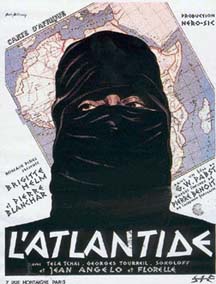
movie poster designed by
Boris Bilinsky
(1900-1948)
1) In his pleadings, Benoit noted that he did
not speak nor read English, a fact that was never challenged during his life time. No one has yet come up with
a satisfactory explanation of how Benoit could have read either She or The Yellow God.
Jules Verne's publisher, the renowned
Monsieur Hetzel, did publish a French
edition of King Solomon's Mines in 1888,
but in its postface, he added that he would not publish its sequel (Allan Quatermain) because it featured a ridiculous and obnoxious Frenchman named Alphonse, and because, while
still of some interest, it was not, in opinion, as good as the first volume.
Hetzel's opinion carried a lot of weight in French literary circles, and as a result, none of Haggard's subsequrent
works were translated into French, at least not until much later. She was eventually serialized in 1898 in a newspaper, La Vie
Moderne, in a much abridged translation by Labouchere, who had removed any passages that could be deemed prurient.
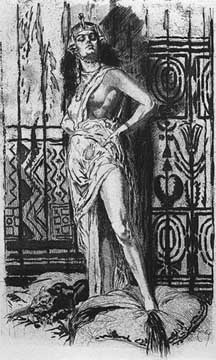 2) Benoit's sources for L'Atlantide are neither hard to find, nor hard to document, and they certainly are more obvious than any
elements found in Haggard's novels. They are:
2) Benoit's sources for L'Atlantide are neither hard to find, nor hard to document, and they certainly are more obvious than any
elements found in Haggard's novels. They are:
Benoit lived in French North Africa from 1892 to 1907, and did his military service there. His father was a military
intendent, first in Tunis, then in Algiers. Benoit was familiar with the notorious theories of French geographer
E. F. Berlioux first published in 1874,
and expanded in 1883 in L'Atlas primitif et l'Atlantis,
of the Saharian Sea, and his locating Atlantis in the Hoggar mountains of the Saharan Atlas.
Benoit knew from life experience that parts of the Hoggar were still totally unexplored, and were guarded by the
fierce Targuis, or Tuaregs, or Blue Men of Sahara (because of the color of their robes). He likely had heard of
a popular Targui legend about a sorceress who lived in somptuous gardens in Mount
Garet-el-Djenoun (The Mountain of the Spirits of Solitude). A feature of the
legend was that no man who had ever gone looking for the sorceress had ever returned. (Similar legends can be found
in other cultures as well.)
Benoit's father, or his research, would have told him of the then-famous case of two French lieutenants, Quiquerez and Segonzac, who had gone out on a mission into the desert, from which only Quiquerez had returned, under
suspicious circumstances. Had he killed his fellow officer? Had they been ambushed? Had Quiquerez abandoned his
companion? The truth was never discovered. Benoit also knew of the ill-fated 1880 Flatters
Expedition into the Hoggar which had been massacred by the natives.
Finally, historical research informed Benoit of the existence of the legendary Tuareg Queen Tin
Himan from the 4th Century AD, who clained to be a descendent of Cleopatra Selene, the daughter of Cleopatra and Marc Antony.
All of these are clearly the foundation upon which L'Atlantide was built, and none of this bear any resemblance to either Haggard's She or The Yellow God.
3) Anyone who actually reads the three
novels in question will soon realize that there are in fact few real similarities beyond superficial, thematic
ones. Unlike Ayesha, Antinea is full of pride and without any shred of conscience or decency; she devours men for breakfast
and uses her wiles to compel Saint-Avit to kill his friend. Antinea is a female sphinx, an avenging fury, a vampire
of sorts, the ultimate femme fatale. Unlike Ayesha, Antinea lives in, and enjoys luxury, her servants, and the
best the modern outside world can bring her. Unlike Ayesha, Antinea is not a victim of the gods, she is the gods. Interestingly, H.P.
Lovecraft wrote to Clark Ashton Smith (H.P. Lovecraft, Selected Letters II.298, 1 October 1927): "Atlantideer,
by Pierre Benoit, has excellent style but is more adventurous than fantastic,"
not bothering to point at any real or imagined similarities with Haggard, which he would likely have done, had
he felt it justified.
Haggard himself remained conspicuously silent during the lawsuit; after the affair was over, a French publisher
decided to publish a new edition of She
for the first time in book form (1920), to which Benoit wrote a very informative and courteous foreword, wishing
Haggard's novel much success
TO READ MORE ON THE SUBJECT, CHECK OUT THE ARTICLE ON ATLANTIDA ON THE VIOLET BOOKS WEBSITE WHICH CONTAINS MUCH INVALUABLE INFORMATION ABOUT RIDER HAGGARD AND LOST RACES NOVELS.
Note: The black & white illustrations
of Antinea are by French artist Almery Lobel-Riche.
The Films:
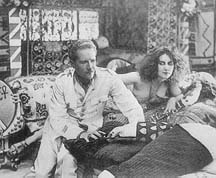
1. L'Atlantide
(B&W., 3 h 15 min min., 1921)
Dir/Wri: Jacques Feyder.
Cast: Stacia Napierkowska (Antinéa),
Jean Angelo (Morhange), Georges Melchior (Saint-Avit), Marie-Louise Iribe.
2. L'Atlantide
(a.k.a. The Mistress of Atlantis and Die Herrin von Atlantis)
(B&W., 110 min., 1932)
Dir: Georg Wilhelm Pabst.
Wri: Ladislao Vajda, Hermann Oberlander,
Alexandre Arnoux, Jacques Deval.
Cast: Brigitte Helm (Antinéa),
Jean Angelo / Gustav Diessl / Gibb McLaughlin (Morhange), Pierre Blanchar / Heinz Klinhenberg / John Stuart (Saint-Avit).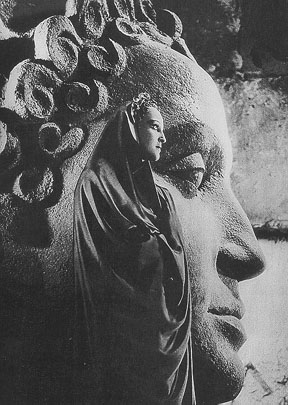
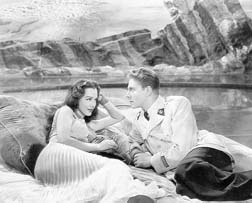
3. Siren of Atlantis
(B&W., 75 min., 1949)
Dir: Gregg G. Tallas (Arthur Dewitt Ripley
& John Brahm).
Wri: Rowland Leigh, Robert Lax, Arthur
Ripley, Thomas Job, Douglas Sirk.
Cast: Maria Montez (Antinéa), Dennis
O'Keefe (Morhange), Jean-Pierre Aumont (Saint-Avit).
4. Toto Sceicco
(Italy, 1950)
Dir: Mario Mattoli.
Wri: Vittorio Metz, Marchello Marchesi,
Agenore Incrocci, Furio Scarpelli.
Note: Tamara Lees plays Antinea to comic
Antonio Sapore in this Italian comedy spoofing Foreign Legion and other Saharan clichés.
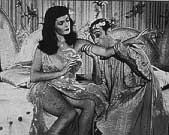
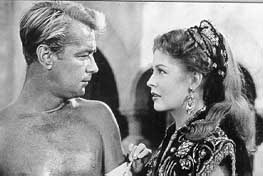
5. Desert Legion
(USA, 1953)
Dir: Joseph Pevney.
Wri: Irving Wallace, Lewis Meltzer.
6. Antinea
- L'Amante della Citta Sepolta (a.k.a. City
Beneath the Desert and Lost Kingdom)
(B&W., 110 min., 1961)
Dir: Edgar G. Ulmer, Giuseppe Masini.
Wri: Edgar G. Ulmer, Edmond Gréville,
Ugo Liberatore, André Tabet, Remigio Del Grosso, Amadeo Nazzari.
Cast: Haya Harareet (Antinéa),
Rad Fulton (Robert / Morhange), Jean-Louis Trintignant (Pierre / Saint-Avit).
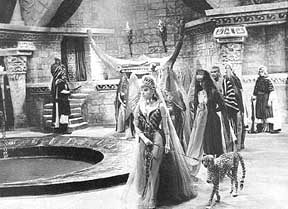
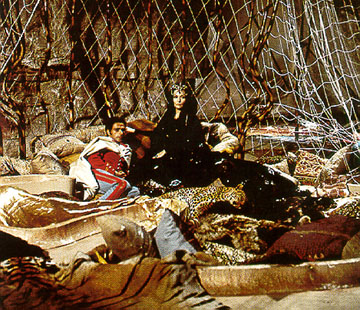
7. L'Atlantide
(telefilm, ORTF
2, Col., 120 min., 24 February 1972)
Dir: Jean Kerchbron.
Wri: Jean Kerchbron, Armand Lanoux.
Cast: Ludmilla Tcherina (Antinea), Jacques
Berthier (Morhange), Denis Manuel (Saint-Avit).
8. L'Atlantide
(Col., 110 min., 1991)
Dir/Wri: Bob Swaim.
Cast: Victoria Mahoney (Antinéa), Tcheky Karyo (Morhange), Christopher
Thompson (Saint-Avit).
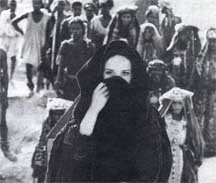
The Author
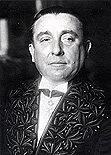 Pierre
Benoit was born in Albi, on 16 July 1886.
His father was in the French Army. After spending his early years and military service in Northern Africa, Benoit
became a civil servant. He published his first novel, Koenigsmark, in 1918. L'Atlantide
followed the next year, and won him the Grand Prize of the French Academy. His novels are colorful, exotic adventures,
often celebrating women. His heroines' names always beging with the letter "A". Benoit became a member
of the French Academy in 1931. He died on 3rd March 1962.
Pierre
Benoit was born in Albi, on 16 July 1886.
His father was in the French Army. After spending his early years and military service in Northern Africa, Benoit
became a civil servant. He published his first novel, Koenigsmark, in 1918. L'Atlantide
followed the next year, and won him the Grand Prize of the French Academy. His novels are colorful, exotic adventures,
often celebrating women. His heroines' names always beging with the letter "A". Benoit became a member
of the French Academy in 1931. He died on 3rd March 1962.